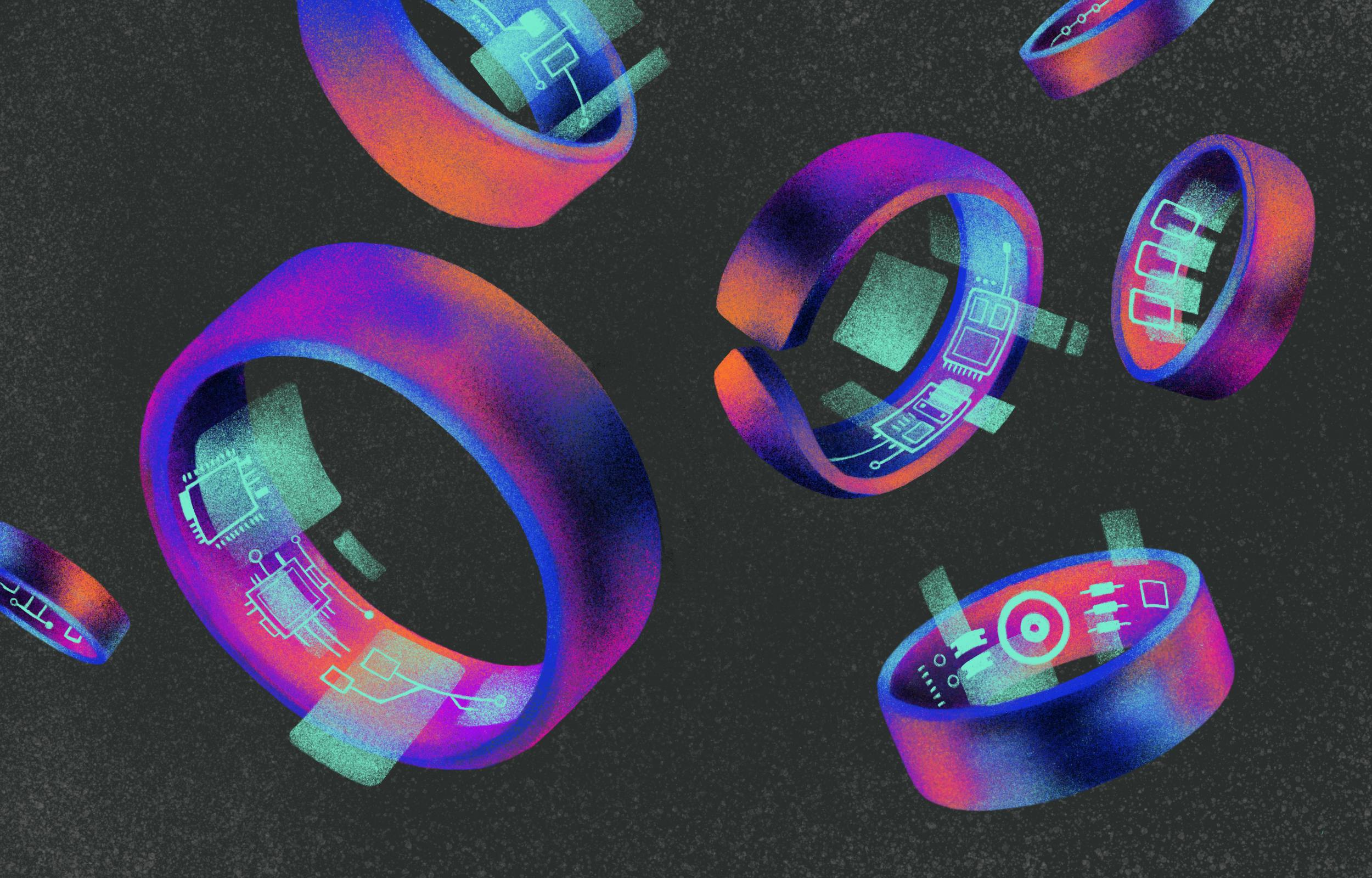Smart rings galore

The smart ring elevator pitch: Why a smart ring when you can have a smartwatch? Or just a regular smartphone? Smart rings have the following legs up on their bigger counterparts:
- First, they are small. As such, the devices are more discreet and can even pass as a chunky piece of jewelry.
- The finger is a better place to track heart rate data than the wrist.
- Rings are more comfortable to wear 24/7.
- Users can avoid clicking around a screen to track their biometric data—until they need to check it on the accompanying smartphone app, of course.
Smart rings are challenging to nail: Despite the benefits inherent to their small size, this also makes the devices difficult to engineer.
With a high price tag and competing smartwatches with more features, smart ring developers need to be creative with what their devices can offer. However, features that don’t live up to promises can lead to a product flop, as we’ve seen with the Motiv Ring and its two-factor authentication claims.
Bigger players eye chronic health applications: Bigger smart ring players recognize these limitations and concerns about their products. In seeking a bigger market, many have started positioning their lifestyle wearables as clinical tools and more explicitly medical devices.
- Oura: Earlier this summer, we discussed how the smart ring giant is partnering with period tracker Clue to help study menopause and perimenopause.
- Movano: The Evie Ring was initially billed as a women’s smart ring. Now, Movano appears to be diversifying its target audience and use cases, even partnering with MIT researchers to use the Evie Ring to capture and analyze data on Long COVID and chronic Lyme disease.
- Ultrahuman: The Ring Air is getting a new premium, subscription-based feature: atrial fibrillation (AFib) detection. Ultrahuman is calling this a world first in a smart ring—along with their new “PowerPlugs” feature, where third-party developers can offer apps and plug-ins for the device. If this story sounds familiar… you may recall we discussed AFib detection in lifestyle wearables with regards to Apple’s AFib approval.
Hot newcomers: Despite the stiff competition and engineering challenges, this year’s CES show floor—and launches from the past few months—spell optimism in the smart ring arena.
- Samsung: The company just launched its Galaxy Ring, marking a Big Tech move into a market otherwise dominated by startups. It’s also notably a product created with Samsung’s other Galaxy products (i.e., the smartphone and watch) in mind, as an accessory rather than a standalone wearable.
- Amazfit: The Helio Ring is geared toward athletes, to help them better understand their recovery. Similarly to the Galaxy Ring, it appears optimized to work with Amazfit’s smartwatch to enable seamless tracking throughout the day, across devices.
- Exerchain: A Kickstarter-funded device, the ExerRing boasts touch controls on its tiny surface and access to an AI health coach via the Exerchain smartphone app.
Are you trying out any of these smart rings? Join in on our conversation on LinkedIn and tell us about it!